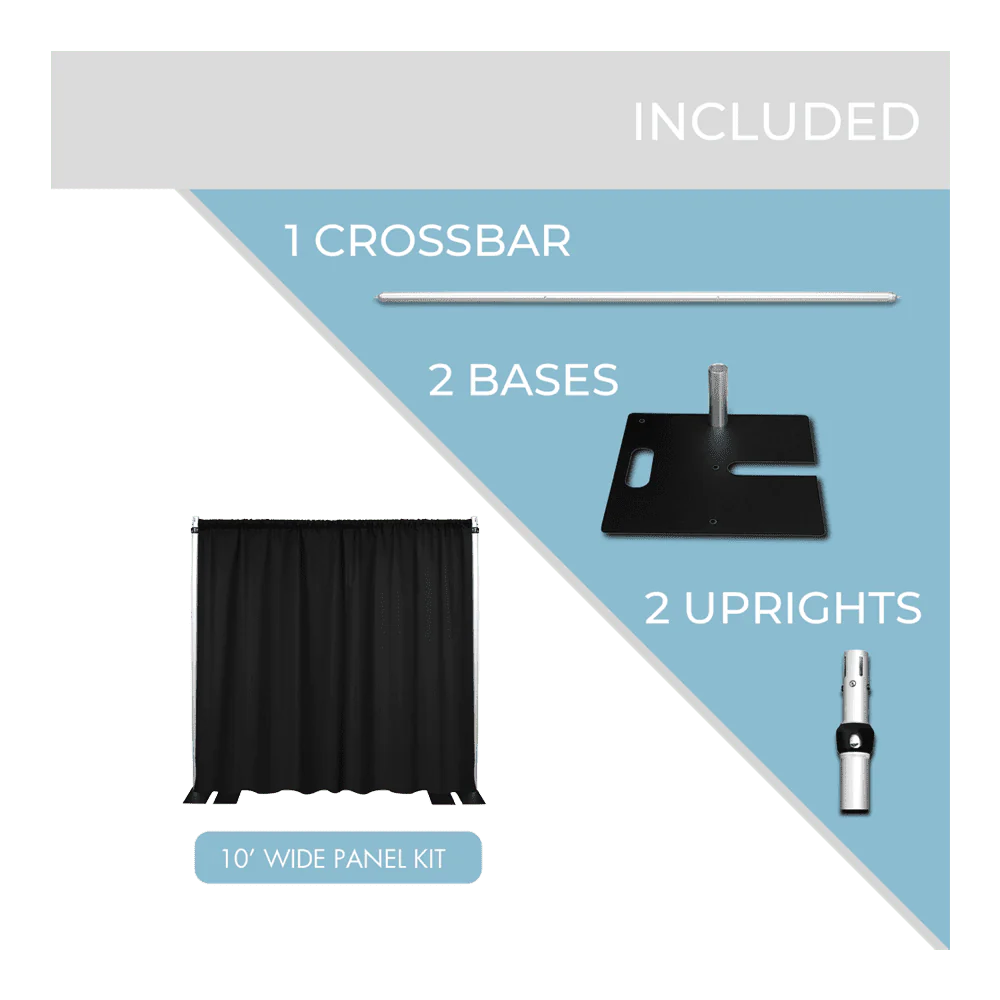Everything You Need to Know About Pipe and Drape Hardware
When it comes to setting up professional-looking spaces for events, trade shows, weddings, and performances, pipe and drape systems are one of the most reliable solutions. At the heart of these versatile systems is the pipe and drape hardware—the foundation that supports the entire setup. Whether you are planning an intimate gathering or a large convention, understanding the different types of hardware and their uses can help you create a stunning and functional space.
In this article, we'll explore what pipe and drape hardware includes, why quality hardware matters, and how to choose the right components for your needs.
What Is Pipe and Drape Hardware?
Pipe and drape hardware refers to the structural components that make up a pipe and drape system. These components are modular, making the system easy to transport, set up, take down, and customize. The core hardware parts include:
Uprights: Vertical poles that support the height of the backdrop or partition. Available in fixed or adjustable heights.
Bases: Heavy metal plates that stabilize the uprights. They vary in size and weight depending on the system’s height and load requirements.
Crossbars: Horizontal poles (also called drape supports) that span between uprights to hold the drapery panels.
Pins: Inserted into the base to anchor the upright poles.
Clamps and Accessories: Used to add additional crossbars, layers, or decorative elements.
Each piece of hardware plays a crucial role in ensuring the entire pipe and drape setup is stable, attractive, and functional.
Why Is Quality Pipe and Drape Hardware Important?
When investing in a pipe and drape system, the quality of the hardware can make a significant difference. Here’s why:
Durability: High-quality hardware is made from robust materials like aluminum or steel, ensuring it can withstand multiple setups and takedowns without bending or breaking.
Safety: Reliable bases and sturdy uprights minimize the risk of accidents, keeping your event safe for guests and staff.
Professional Appearance: Well-constructed hardware keeps your drapes smooth and wrinkle-free, presenting a clean, polished look.
Ease of Use: Good hardware is designed for quick assembly and disassembly, saving valuable time during event setup and teardown.
Cutting corners on hardware might save money upfront but can lead to higher costs in the long run due to replacements, repairs, or potential safety hazards.
Types of Pipe and Drape Hardware
There are several types of hardware available, depending on the scale and purpose of your setup. Here are the most common:
1. Standard Pipe and Drape Hardware
Best for basic event setups like small booths or photography backdrops.
Features fixed-height uprights and lightweight bases.
2. Adjustable Hardware
Uprights can telescope to various heights, offering flexibility for different venues and backdrops.
Ideal for events requiring varied ceiling heights or layered designs.
3. Heavy-Duty Pipe and Drape Systems
Designed for tall, wide, or outdoor setups that need extra stability.
Comes with heavy bases and reinforced uprights.
4. Specialty Hardware
Curved crossbars for creating rounded backdrops.
Valance hangers for multiple drape layers.
Double-back hardware for creating drape walls with a finished look on both sides.
Choosing the right type of hardware depends on the size, style, and purpose of your event.
Tips for Choosing the Right Pipe and Drape Hardware
When selecting pipe and drape hardware for your project, keep these tips in mind:
Know Your Venue: Check ceiling heights, floor surfaces, and spacing before purchasing or renting hardware.
Consider the Drape Weight: Heavier fabrics like velour need stronger crossbars and uprights, while lighter sheers can be supported by standard setups.
Plan for Adjustability: Telescoping uprights and crossbars give you more flexibility for various events and layouts.
Prioritize Portability: If you need to move your setup frequently, opt for lighter but durable hardware.
Don’t Forget Accessories: Valance hangers, additional crossbars, and storage carts can simplify complex setups and make transportation easier.
Maintaining Your Pipe and Drape Hardware
Proper maintenance extends the life of your pipe and drape system. Here are a few maintenance tips:
Inspect regularly: Check for signs of damage, such as bent uprights or cracked bases.
Clean after use: Wipe down poles and bases to remove dust and grime, especially if used outdoors.
Store properly: Use storage carts and protective cases to prevent hardware from getting scratched or damaged during transportation.
Replace worn parts: Keep your system safe and looking professional by replacing hardware that shows wear and tear.
Final Thoughts
Pipe and drape hardware is the backbone of any modular event setup, providing structure, stability, and style. By choosing the right hardware and maintaining it properly, you ensure that your events always look professional and run smoothly.
If you're ready to build or upgrade your pipe and drape setup, make sure you invest in high-quality hardware that meets your specific needs. A solid foundation is the key to creating unforgettable spaces.




Comments
Post a Comment